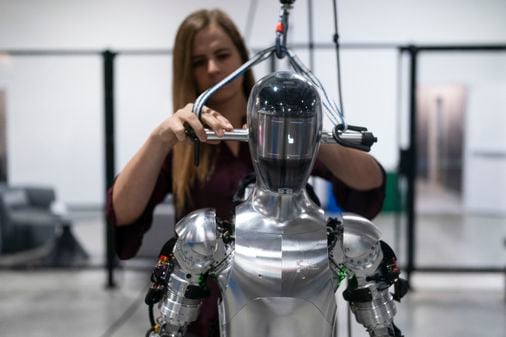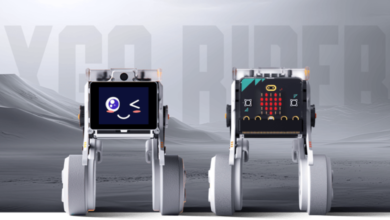Fady Saad explains the hype

Fady Saad, founder and general partner of robotics venture capital firm Cybernetix Ventures in Boston, has been working and investing in robotics for over a decade and has seen interest in humanoid robots rise and fall.
Saad, who also cofounded the startup support effort nonprofit MassRobotics, spoke to the Globe about the trend. One takeaway: Investors should be patient. (This interview has been edited for length and clarity.)
Q: There’s an infamous DARPA Robotics Challenge video from 2015 where humanoid robots are falling down and not doing so well. What’s happened over the last decade to turn humanoid robots into a more serious business opportunity?
There’s still a chance they can fall down! But there have been advancements in control systems, balancing systems, locomotion systems. And another key difference is the DARPA challenges were mainly academic-sponsored humanoids. What’s happening now is humanoid robots are being produced by private companies, which means they have larger budgets, they have access to more resources, they have access to more talent, and they can speed up development.
Q: We’ve seen a couple of the startups, such as Figure AI in California, raise a lot of money in the past few months. What’s stirring the excitement?
I like to take an optimistic-realistic approach. What’s happening now, the fact that it’s becoming mainstream with large rounds of financing and multiple companies popping up, is all great. What it does is it gives more attention to the space of robotics, smart machines, and the humanlike robots. … If I’m a software engineer, 1712696848 I might be more interested in robotics. If I’m an investor, robotics and humanoid robots seems interesting. If I am a policy maker, I’ll start paying attention to what’s going on. What are the safety, security, and privacy regulations needed? If I’m a corporate [investor], as we have seen corporates start paying attention, how can they use this technology? All of this is very positive, I think it’s great.
Q: But you’re also somewhat wary of the hype?
It’s important to balance this optimistic view with a more realistic view. Even though all of this is positive, it’s important to manage expectations. We want to avoid a bubble or hype, similar to what happened in self-driving cars, drones, and many other technologies before that. I don’t want delays in humanoid robots to impact other amazing work that other robotics companies are doing in logistics and manufacturing, construction, health care.
The right people that should be investors getting involved now are people who have deep pockets, patient investors. Because they can invest in technology that probably will take 10-plus years until it sees actual significant commercial returns.
Q: A lot of the current focus is on using humanoid robots in warehouses. Is that the most promising application in your view?
It’s very hard to justify the use of humanoids in manufacturing facilities or warehouses now because these are facilities with flat surfaces and very structured environments. Why do you need a two-legged bipedal robot to move there? You are better off using wheels.
I’m a big believer that one of the best applications for humanoids is space exploration … it’s a fraction of the cost of an astronaut. … And when it lands on the moon or Mars or any other planet, you want to be able to explore. You don’t want it to tilt on its side and not be able to do anything, like we have seen recently. So you want it to be able to move and get up. I think space is one of the amazing and most attractive use cases.
Q: How should the government be involved? Is there a need for rules for humanoid robots?
I think there’s a need for regulation. Because it’s such a critical, impactful, and very powerful technology if it falls in the wrong hand or the wrong uses … But there’s a balance between this and how we make sure that we don’t put regulations in place that will stifle innovation and the good uses of the technology, especially if we’re looking at other countries that are investing billions of dollars. We have a very clear example: China has a national strategy to have a humanoid out by 2025.
Q: Boston Dynamics had a groundbreaking humanoid robot called Atlas years ago but never commercialized it. Can our region be involved in this boom?
Boston has this legacy of creating things, coming up with things, inventing things, and then giving them away to the whole world. So it might be one of those things. Think of computers, think of semiconductors, think of Facebook, think of lots of innovations. I don’t think that’s a sad thing. The nature of the city is we invent things and we gift them to the world. I mean, Boston Dynamics generated lots of [intellectual property], lots of expertise, lots of talent that we are still living off of in many companies now.
Can we play in the humanoid space? I think it’s really a question for the [Healey] administration and the community. … It’s a question of if we want to get engaged now, do we want to own this or not? I think we have tons of innovation in other sectors. I believe that. I don’t really have a strong opinion here yet, because it’s a tricky one.
Aaron Pressman can be reached at aaron.pressman@globe.com. Follow him @ampressman.



